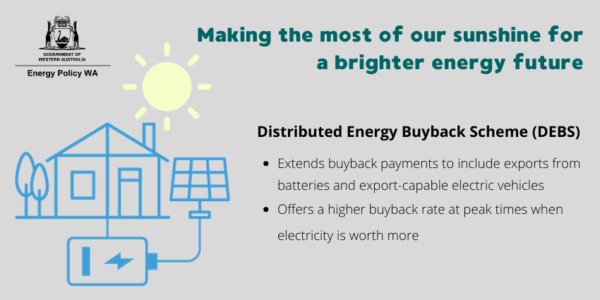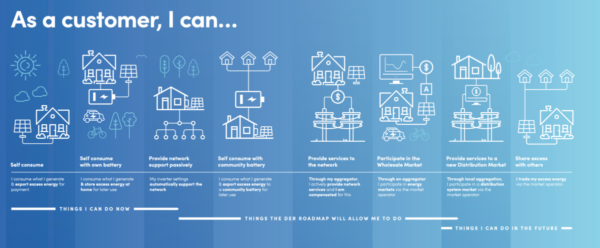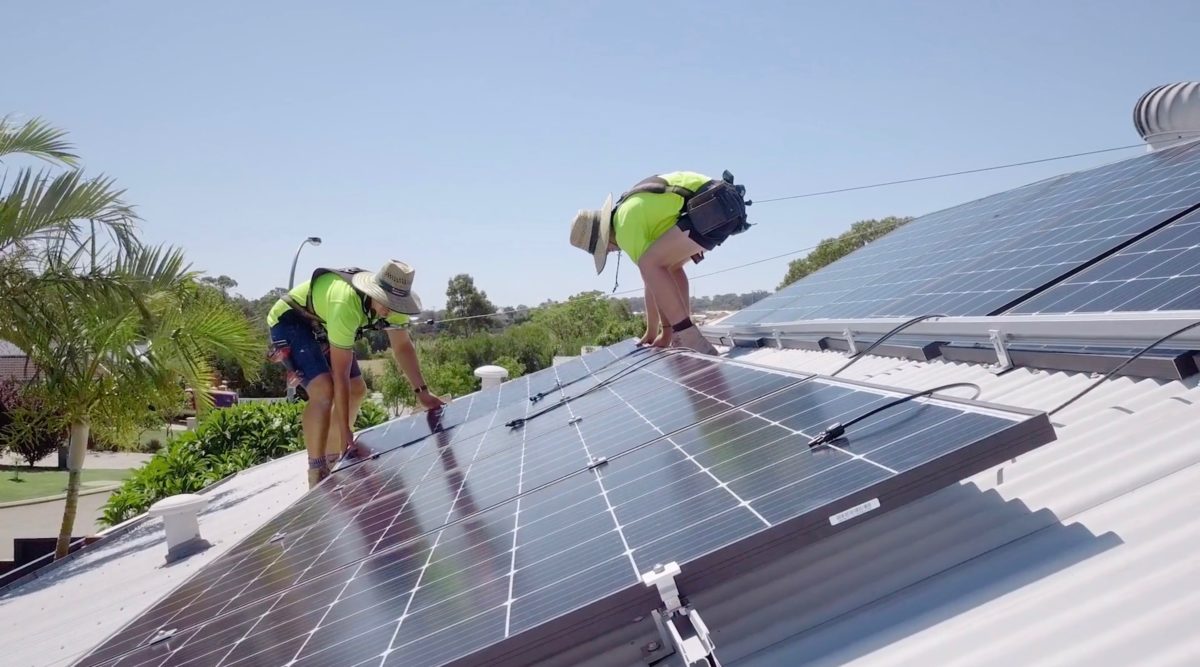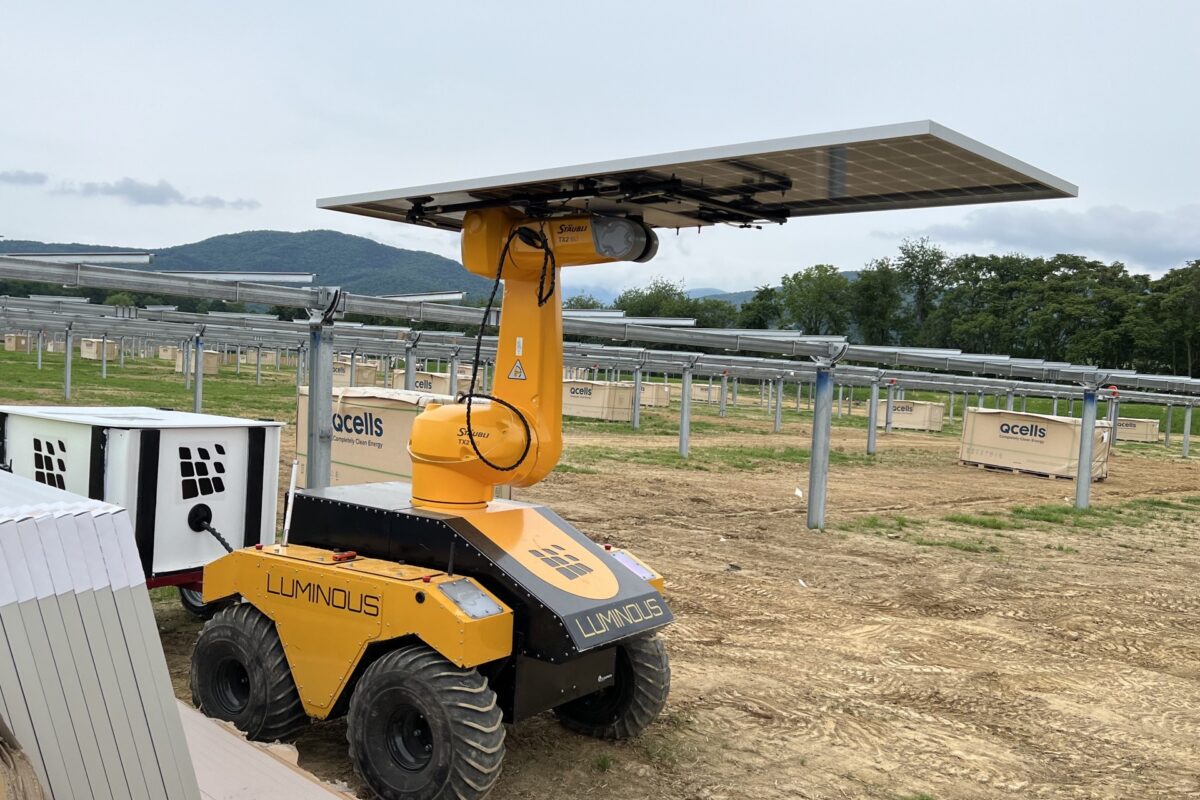Under the new Distributed Energy Buyback Scheme (DEBS), any solar electricity exported after November 6, between 15:00 and 21:00, will earn ten cents/kWh, and electricity exported at all other times will earn three cents/kWh. The higher-payment period reflects the time of day when demand is highest, and so rewards those exporting their solar.

DEBS is a significant upgrade from the previous energy buyback scheme, which didn’t include exports from batteries or EVs, nor did it reward export in consideration of demand. The idea is to flatten the “solar duck curve” currently pecking the tender sides of the Australian Energy Market Operator (AEMO) and various levels of government. The idea is to hit two birds with one stone (hopefully one of them being the duck), to encourage the uptake of solar, batteries, and EVs, while also encouraging the most efficient distribution of solar energy in the grid.
For Western Australians, DEBS encourages the continuing uptake of solar, particularly on west-facing rooftops which receive sunlight at times when demand is highest and most profitable. Moreover, DEBS also encourages continued energy storage and EV uptake.
Panel orientation may sound like solar basics, but it is solar basics that Australia needs to work on. As a University of South Australia study showed this month, rooftop PV systems are typically installed with a north orientation – to maximise energy intake. However, this power production profile does not align well with electricity demand. Electricity isn’t in high demand at midday, when a north-facing panel is at its peak. The study’s author, University of South Australia researcher Kirrilie, said that “The real challenge now facing the solar industry is finding ways to balance production and consumption by maximising self-consumption for the solar panel owner.”
Rowe’s research argues that solar panel orientation is one elegantly simple solution. “By orienting panels in different directions rather than just facing the equator,” says Rowe, “it’s possible to minimise the shortfall between load and generation. This benefits the end-user by decreasing the amount of electricity required to be imported, and the stability of the grid by decreasing the amount of variability between peak and low loads.”
“Western Australia is undergoing a massive energy transformation,” said WA Energy Minister Bill Johnston, “with one in two households expected to have solar panels by 2030. This new scheme encourages households to make the most o their solar energy, when it is plentiful in the middle of the day, which not only benefits them but also supports the grid.”

Image: WA Energy Transformation Taskforce
The efficacy of solar coordination is no small issue at the minute. Only last week, AEMO published its 2020 Electricity Statement of Opportunities, which included that the South Australian Government has given AEMO the right to switch off the state’s rooftop PV fleet when the mass of rooftop generation threatens to reduce operational demand to a point where it impacts grid stability.
Smart Energy Council (SEC) CEO John Grimes told pv magazine that South Australia needn’t have made such a drastic decision. Grimes said the mitigation route chosen by the South Australian Premier and his Minister for Energy and Mining, Dan Van Holst Pellekaan, demonstrated “a traditional hierarchical command-and-control approach” which is unsuited to the diverse participants now involved in energy generation, including consumers and thousands of small businesses.
By contracting with existing service providers in the growing coordinated distributed-energy resource (DER) space, Grimes continued, the Government could have achieved greater “control and functionality than you’re going to get from these new requirements”.
DEBS is part of the WA Government’s DER Roadmap. To be eligible for DEBS your renewable energy system must have a generating capacity between 500 W and 5 kW. However, a 6.6 kW solar PV system with a 5 kVa inverter is accepted to be generating at a capacity of 5 kW. As for your home battery or EV, there is no limit.
This content is protected by copyright and may not be reused. If you want to cooperate with us and would like to reuse some of our content, please contact: editors@pv-magazine.com.









5 comments
By submitting this form you agree to pv magazine using your data for the purposes of publishing your comment.
Your personal data will only be disclosed or otherwise transmitted to third parties for the purposes of spam filtering or if this is necessary for technical maintenance of the website. Any other transfer to third parties will not take place unless this is justified on the basis of applicable data protection regulations or if pv magazine is legally obliged to do so.
You may revoke this consent at any time with effect for the future, in which case your personal data will be deleted immediately. Otherwise, your data will be deleted if pv magazine has processed your request or the purpose of data storage is fulfilled.
Further information on data privacy can be found in our Data Protection Policy.